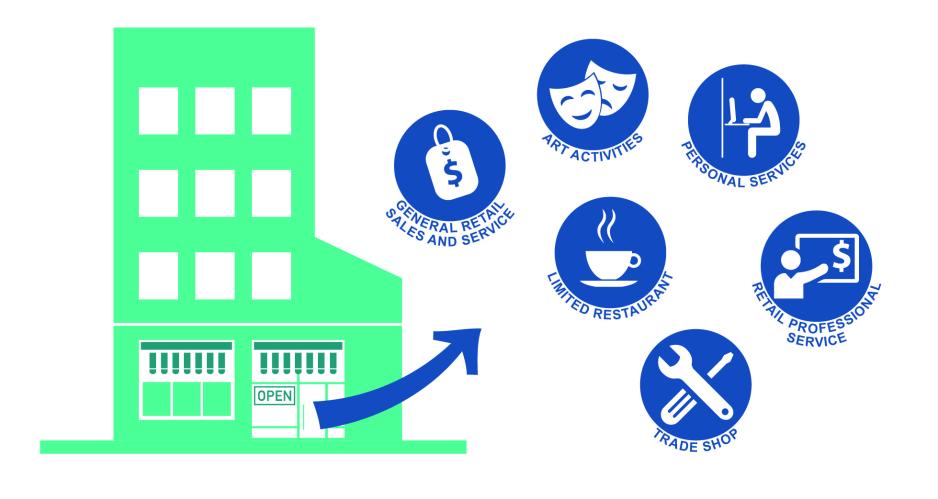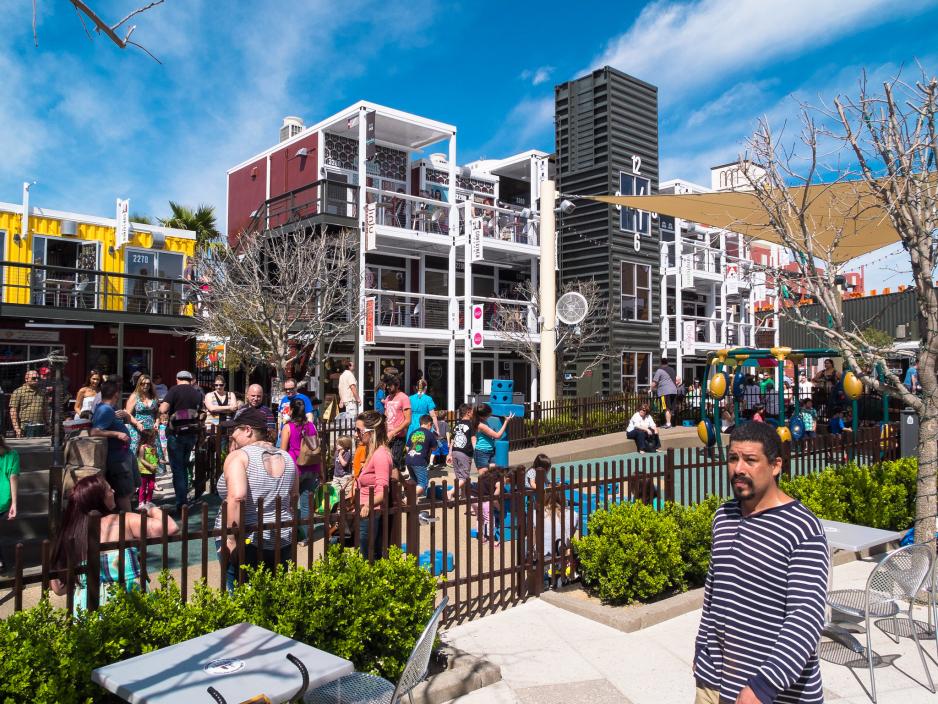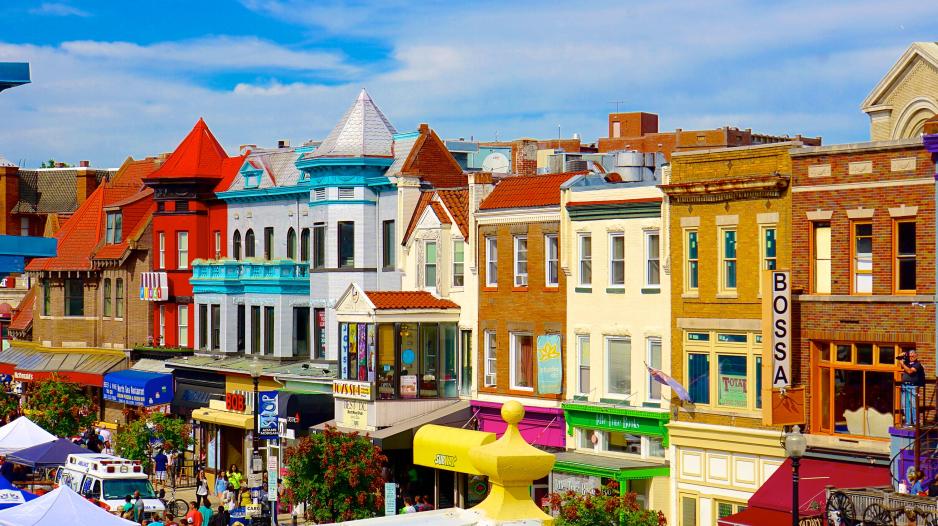San Francisco, California, USA – Flexible Retail Ordinance
In 2018, the City and County of San Francisco adopted a flexible retail ordinance, which allows different types of businesses with different owners to occupy the same space. The ordinance was enacted to address ground-floor vacancy concerns in certain San Francisco neighborhood districts. The new ordinance responds to the changing nature of retail, streamlines the process for opening new businesses, and helps businesses share the burden of rental costs.
This new “Flexible Retail” use allows a combination of any of the following types of businesses within a ground-floor space: arts activities, limited restaurant, general retail sales and services, personal service, retail professional service, and trade shop. The ordinance also allows pop-up shops to occupy storefronts for up to 60 days with a temporary permit.
Some examples of combined business stores include a local apparel company with an ice cream bar, a coffee shop that normally closes after lunch hosting “pizza night” once a week, a pop-up retail shop inside a café, and a co-working space within a retail store. Allowing different uses within one tenant space can also enhance a visit to the store to become a distinctive experience, which attracts modern-day customers.
Downtown Container Park, Las Vegas - Experiential Retail
Downtown Container Park is a community-focused, experience-based retail development as part of a $350 million investment to revitalize downtown Las Vegas and help incubate small businesses. Since its opening in 2013, Downtown Container Park has been very successful in drawing foot traffic, attracting millions of visitors. Not only does the retail center provide a unique experience to its customers, but it also provides a low-risk option to small businesses to test whether their business can be successful in a brick-and-mortar retail space.
Downtown Container Park is a distinct destination as an open-air retail center made up of three levels of modular cube-shaped spaces and shipping containers, all occupied by local small retail and food businesses, striving to highlight Las Vegas’s local art, food, and fashion culture. The retail center features a large fire-emitting praying mantis sculpture at its entrance and includes a variety of community amenities such as a shaded central plaza, concert venue that features free live music, a treehouse playground, and a 360-degree domed theater.
Adams Morgan Partnership BID, Washington DC – Placemaking to Enhance Retail
The Adams Morgan Partnership BID (AMPBID) has used several strategies to create a vibrant commercial center and encourage the surrounding neighborhood to shop and dine locally. These strategies focus on creating an attractive and lively street environment.
In 2012, AMPBID helped renovate the commercial area’s main thoroughfare by widening sidewalks, developing new sidewalk café spaces within those widened sidewalk spaces, adding new streetscape elements like street trees and banners, and reconfiguring back-in diagonal parking to be parallel parking. AMPBID also hosts events, including a summer concert series and a Porch Fest musical festival in the fall to draw residents to the commercial center and enhance foot traffic to local retail. With limited vehicle parking in the area, AMPBID hosts a popular annual Bike to Work pit stop and provides facilities such as bike racks outside of stores.


